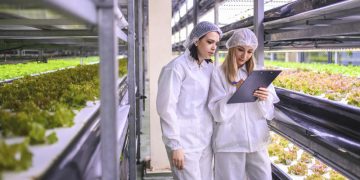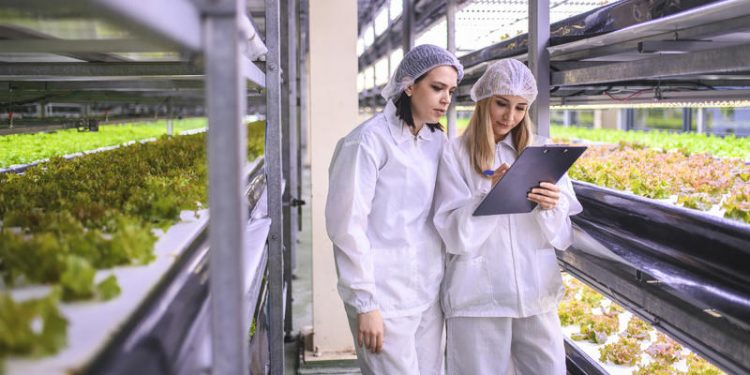In recent years, unusual drought and heavy rainfall have caused crop failures as far away as Germany, prompting experts to look for alternative farming methods to feed the world’s growing population. One such method is vertical farming, as Christian Häckl and Claudia Träger highlight in their climate review. Vertical farming involves growing agricultural products on multiple levels, sometimes in skyscraper-like structures. This technique is not limited to vegetables and fruits; These high-altitude farms can even raise livestock such as pigs.
Unlike traditional farming, plants on vertical farms do not grow in soil. Instead, they receive nutrients and water through mist or containers designed for their growth. While the concept of growing food in layers is not new, climate change and population growth have made alternatives to extensive farming more pressing in recent years.
What is home farming?
Indoor farming takes vertical farming to the next level. As the name suggests, it involves growing crops inside closed systems, ranging from containers to massive halls, isolating them from natural sunlight, wind and precipitation. LEDs are replacing sunlight, and multiple layers of growing surfaces are often used to maximize yield in a small footprint.
Many vegetables and fruits can be grown indoors, but feasibility varies. High running costs mean that space must be used optimally. Fast-growing and compact crops that sell for a high price are ideal. The current focus is on leafy greens such as lettuce, spinach and arugula, as well as herbs such as basil, coriander and parsley. Tall crops such as tomatoes are less suitable.
Is artificial light as effective as sunlight?
Artificial light cannot completely imitate sunlight. LED lamps, despite their advantages, cannot produce such a wide spectrum as the sun. However, controlled artificial light can optimize plant growth, flavor and nutrient content. Research from the Weihenstephan-Triesdorf University of Applied Sciences shows that the right spectrum of light can improve certain plant properties. Comparing the taste of homegrown vegetables and conventionally grown vegetables is subjective. While homegrown vegetables may taste better thanks to personal effort, supermarket produce often lacks the microbial richness of traditional soils. Nutrient-controlled vertical farms can produce tasty, healthy vegetables.
Advantages of indoor and vertical farming
Vertical and indoor farming has a number of advantages:
- Cultivation all year round, regardless of weather conditions.
- Reduced transportation costs when located near demand centers.
- Less use of water, fertilizers and pesticides compared to traditional farming.
- Viability in climate-challenged regions.
- inimal land use.
- Availability of locally produced exotic products.
- High automation reduces labor costs.
- Disadvantages of indoor and vertical farming
However, these methods also have significant disadvantages:
- High production costs due to investment in construction and technology.
- Huge electricity consumption.
- Environmental concerns about widespread use of LED lamps.
- Inability to grow staple crops such as rice, potatoes and grains.
- Ethical issues in animal husbandry.
- Potential harm to small farmers.
- Vulnerable to power outages, earthquakes and attacks.
- Is vertically grown produce organic?
Even though vertically grown food is grown under controlled conditions, it cannot be called organic. According to the German Federal Agricultural Information Center, organic farming requires cultivating the soil. Food grown on artificial substrates and fed with aqueous solutions cannot be sold as “organic”.
Vertical and indoor farming represent promising solutions for sustainable agriculture in the face of climate change and population growth. While these methods offer numerous benefits, they also come with challenges that need to be addressed. As technology advances, vertical farming could become a cornerstone of the future of food production, complementing traditional agriculture and ensuring food security.
































